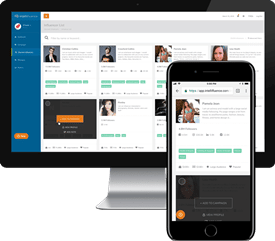Influencer marketing has become an essential component of many brands’ digital marketing strategies. However, creating an effective influencer marketing budget can be challenging. Understanding the costs involved, the potential returns, and the differences between working with various types of influencers are crucial steps in developing a successful budget. This article will guide you through the process of creating an influencer marketing budget, highlighting key considerations and providing specific examples to help you make informed decisions.
Understanding Influencer Marketing Costs
Influencer marketing costs can vary widely depending on several factors, including the type of influencer, the scope of the campaign, and the expected deliverables. Here are some common elements that influence the cost of an influencer marketing campaign:
- Influencer Type: The costs associated with different types of influencers can vary significantly. Micro influencers typically charge less than celebrity influencers but can still offer substantial value.
- Content Creation: High-quality content creation requires time and resources, and influencers may charge additional fees for producing videos, photos, or other creative assets.
- Campaign Duration: Longer campaigns often require more investment, as influencers may need to produce multiple pieces of content over an extended period.
- Platform: The social media platform used for the campaign can also affect costs. For example, TikTok and YouTube influencers might charge more than those on Instagram or Twitter/X due to the nature of the content and audience engagement.
Steps to Create an Influencer Marketing Budget
1. Define Your Campaign Goals
Before determining your budget, it’s essential to define the goals of your influencer marketing campaign. Are you looking to increase brand awareness, drive sales, or boost engagement? Your goals will influence the type of influencers you work with and the budget required.
Example: If your goal is to drive sales for a new product launch, you might allocate more budget towards influencers with a proven track record of high conversion rates.
2. Identify Your Target Audience
Understanding your target audience is crucial for selecting the right influencers and allocating your budget effectively. Consider the demographics, interests, and behaviors of your ideal customers.
Example: If your target audience is Gen Z, you might focus on TikTok influencers who have a strong following among this demographic.
3. Choose the Right Influencers
Selecting the right influencers involves evaluating their reach, engagement rates, and relevance to your brand. There are two primary types of influencers to consider:
- Micro Influencers: These influencers have smaller followings (typically 1,000 to 100,000 followers) but often have highly engaged audiences. They are usually more affordable and can offer a good return on investment (ROI) for niche markets.
Example: A beauty brand might collaborate with micro influencers who have a dedicated following of skincare enthusiasts to promote a new product line.
- Celebrity Influencers: These influencers have large followings (often millions of followers) and can provide extensive reach and visibility. However, they come at a higher cost and may not always guarantee high engagement or conversions.
Example: A global fashion brand might partner with a celebrity influencer to showcase their latest collection during a major event like Fashion Week.
4. Determine Influencer Rates
Influencer rates can vary widely based on factors such as follower count, engagement rate, and content type. Here’s a general idea of what to expect:
- Micro Influencers: Rates can range from $100 to $1,000 per post, depending on their niche and engagement levels.
- Mid-Tier Influencers: Rates typically range from $1,000 to $10,000 per post.
- Macro Influencers and Celebrities: Rates can start at $10,000 per post and go up to $500,000 or more, depending on their fame and reach.
Example: For a mid-tier influencer with 200,000 followers and a high engagement rate, you might budget around $5,000 per sponsored post.
Consider those figures a starting point, and if you want to do a deeper dive, you can check out the Intellifluence Influencer Compensation Report we released in 2023. In it, you will find a network-by-network summary of compensation data provided by our real-life influencers.

Featured Influencer: Jacob Schwab
Biochemistry major at Oakland University. Full-time worker/student. Looking to dabble in a little bit of everything the world has to offer. Especially that of the influencer world. I can’t wait to try this out! I have experience working as a brand ambassador for Size Up Supplements and te/so as well.
You can use this data to put together an accurate budget and pitch with more precision.
5. Allocate Your Budget
Based on your goals, target audience, and influencer rates, allocate your budget across different influencers and campaign activities. It’s often beneficial to diversify your budget to include a mix of micro, mid-tier, and celebrity influencers to maximize reach and engagement.
Example: If your total influencer marketing budget is $50,000, you might allocate $20,000 for celebrity influencers, $15,000 for mid-tier influencers, and $15,000 for micro influencers.
6. Factor in Additional Costs
Don’t forget to include additional costs such as content creation, agency fees (if you’re working with an influencer marketing agency), and tracking and measurement tools.
Example: If content creation costs amount to $10,000 and agency fees are $5,000, these should be included in your overall budget.
7. Evaluating the Effectiveness of Your Budget
Once your campaign is underway, it’s essential to monitor and evaluate its performance to ensure your budget is being used effectively. Key metrics to track include:
- Engagement Rate: The level of interaction (likes, comments, shares) your content receives.
- Reach and Impressions: The number of unique users who see your content and the total number of times it’s displayed.
- Conversion Rate: The percentage of users who take a desired action, such as making a purchase or signing up for a newsletter.
- Return on Investment (ROI): The overall return from the campaign compared to the amount invested.
Example: If a campaign with a micro influencer results in a 10% increase in sales and a high engagement rate, it indicates a good use of budget.
Conversely, if a celebrity influencer campaign results in low engagement and minimal sales impact, it might suggest a need to reassess budget allocation.
Case Study: Effective Influencer Marketing Budget Allocation
Company: Skincare Brand “GlowSkin”
Campaign Goal: Increase brand awareness and drive sales for a new product line.
Target Audience: Millennial women aged 25-35 who are interested in skincare and beauty.
Budget: $100,000
Influencer Selection:
- Micro Influencers: 10 influencers with 20,000-50,000 followers each. Total budget: $20,000
- Mid-Tier Influencers: 5 influencers with 100,000-200,000 followers each. Total budget: $40,000
- Celebrity Influencer: 1 influencer with 2 million followers. Total budget: $30,000
- Content Creation and Additional Costs: $10,000
Outcome:
- Micro Influencers: High engagement rates (average 8%), positive brand mentions, and increased follower growth on the brand’s social media.
- Mid-Tier Influencers: Significant reach and moderate conversion rates (5% increase in sales).
- Celebrity Influencer: Massive reach but lower engagement compared to micro and mid-tier influencers.
Evaluation:
- The campaign achieved high brand awareness due to the celebrity influencer’s reach.
- Micro and mid-tier influencers drove higher engagement and conversions, suggesting a balanced approach to budget allocation is effective.
Creating an influencer marketing budget requires careful planning and strategic allocation of resources. By understanding the costs involved, setting clear goals, and selecting the right mix of influencers, brands can maximize their ROI and achieve their marketing objectives. Whether working with micro influencers or celebrity influencers, it’s essential to continuously monitor performance and adjust the budget as needed to ensure the success of your influencer marketing campaigns.

SallyBot is committed to helping users get the most out of Intellifluence. By helping brands create campaigns, providing unparalleled customer service and offering useful advice, nothing makes SallyBot happier than hearing she is liked… Really, really liked.






